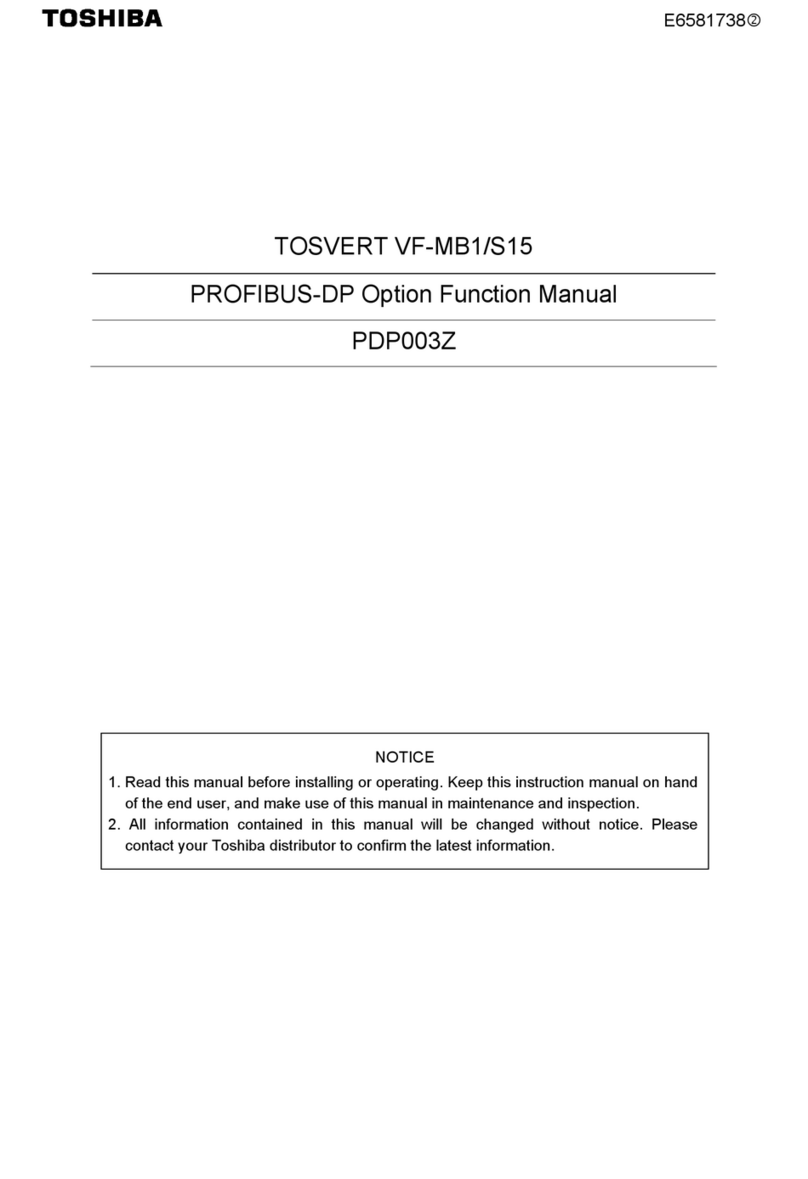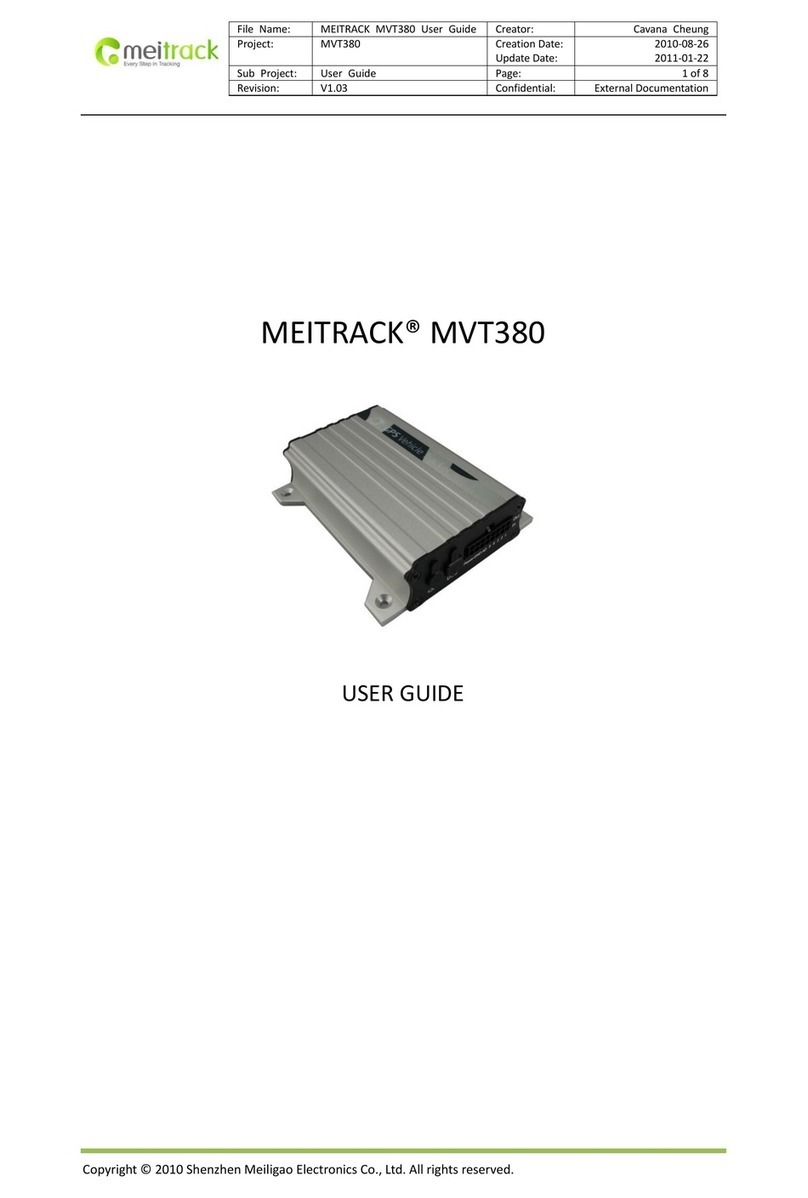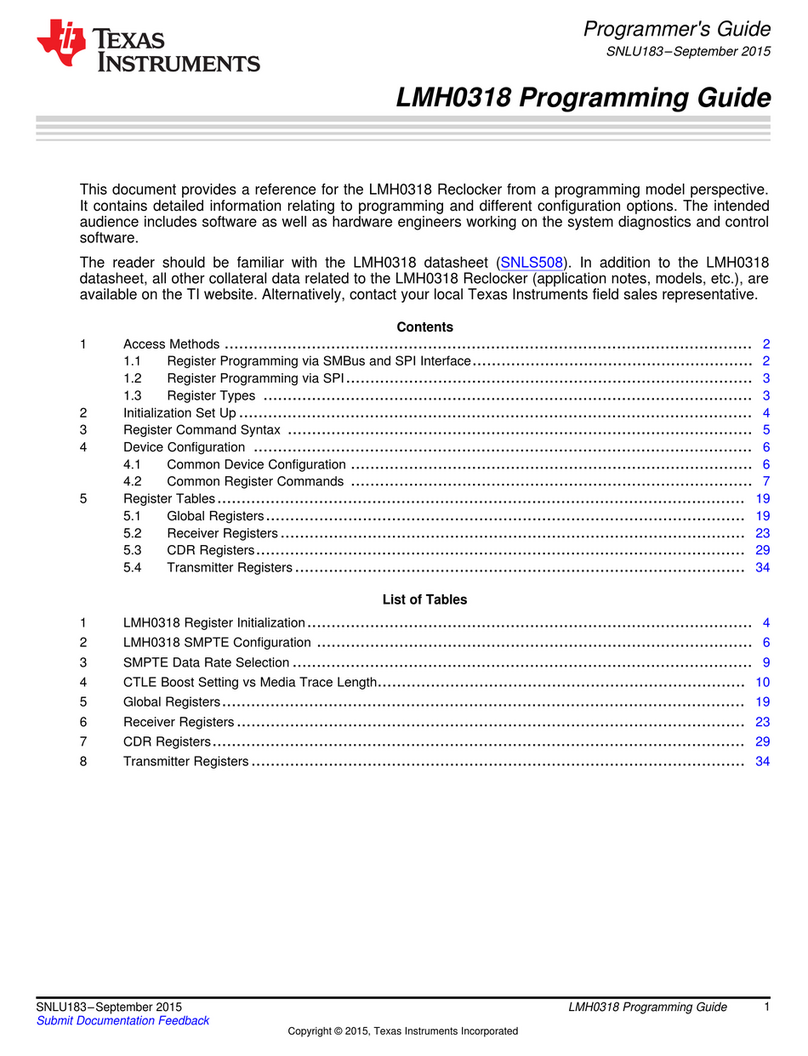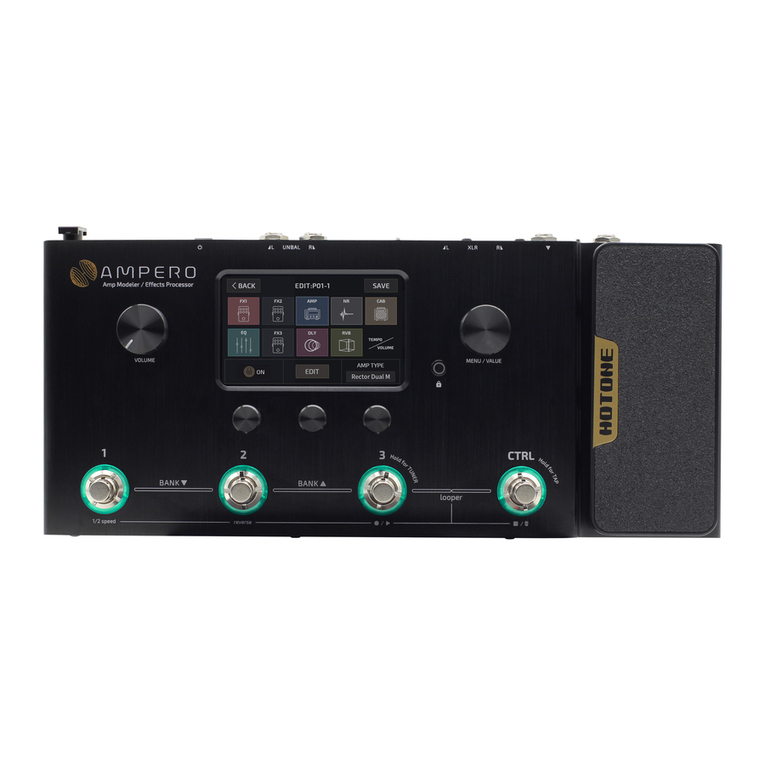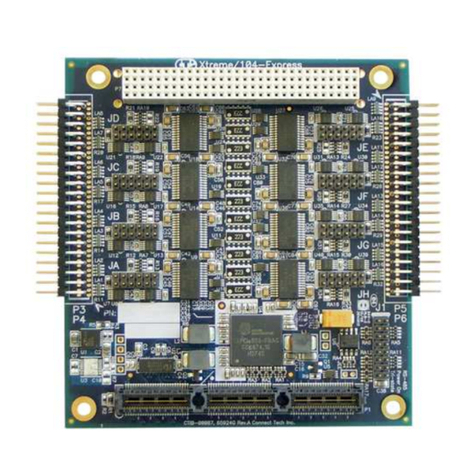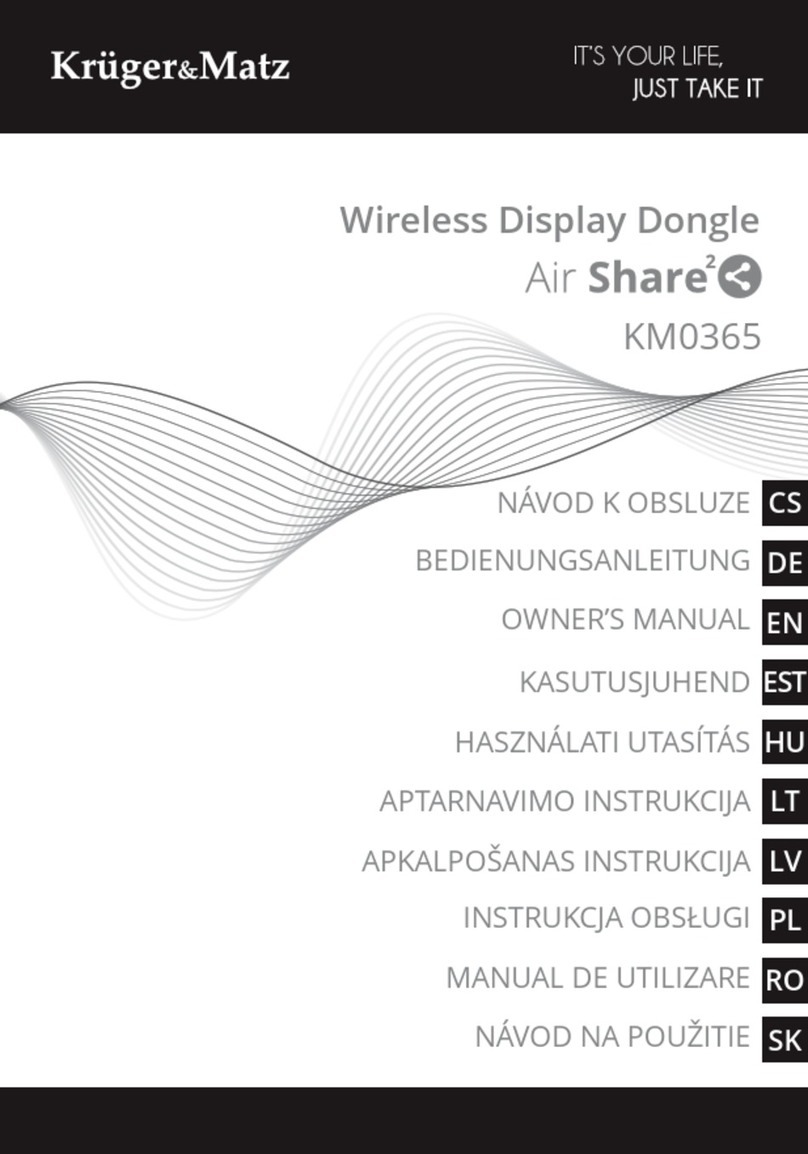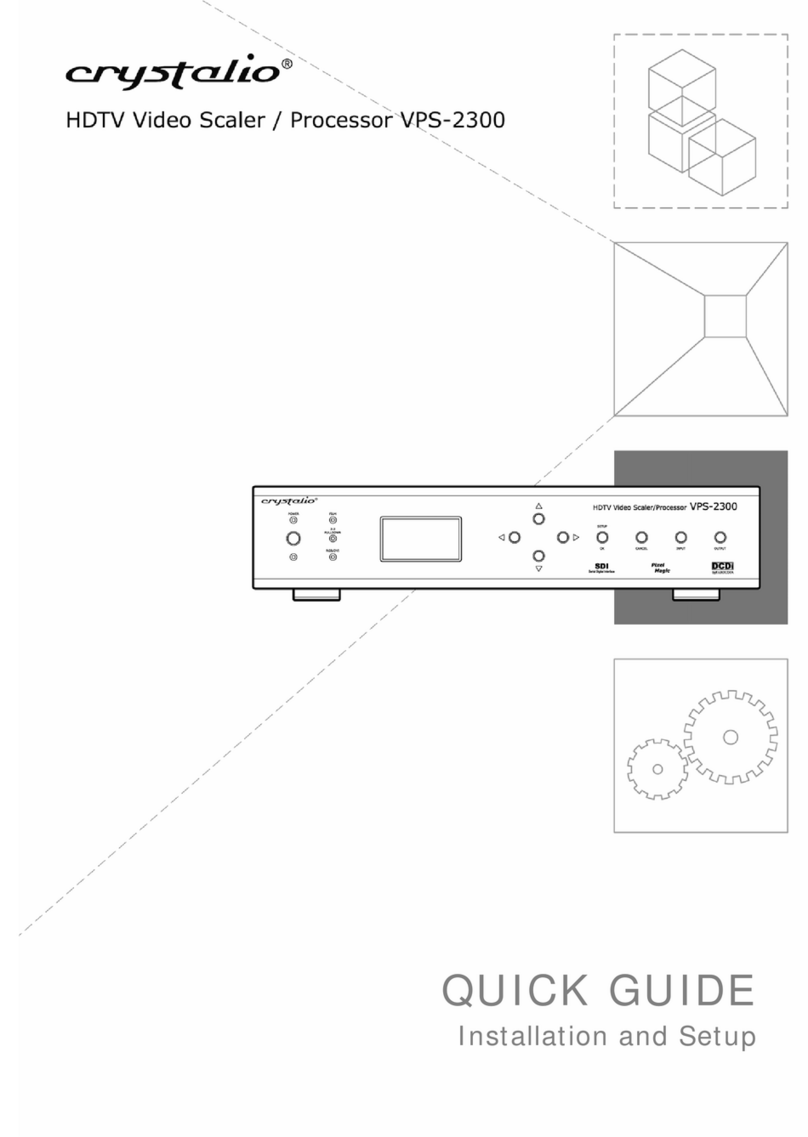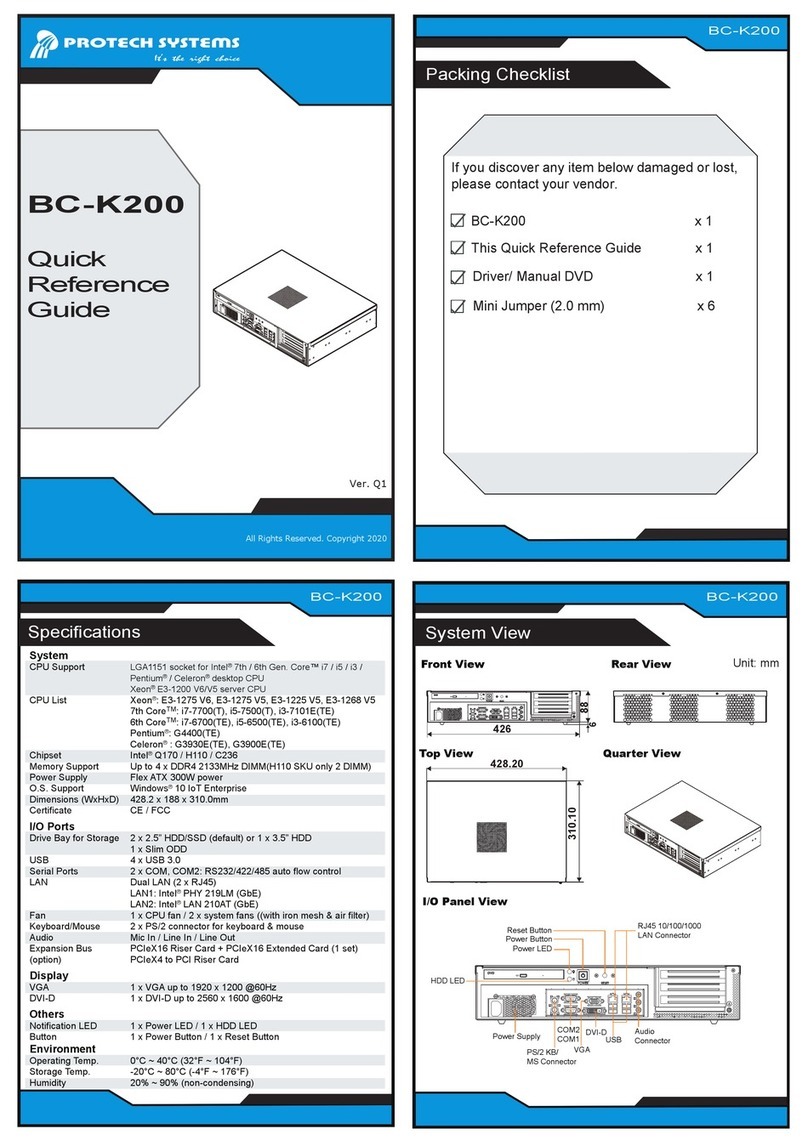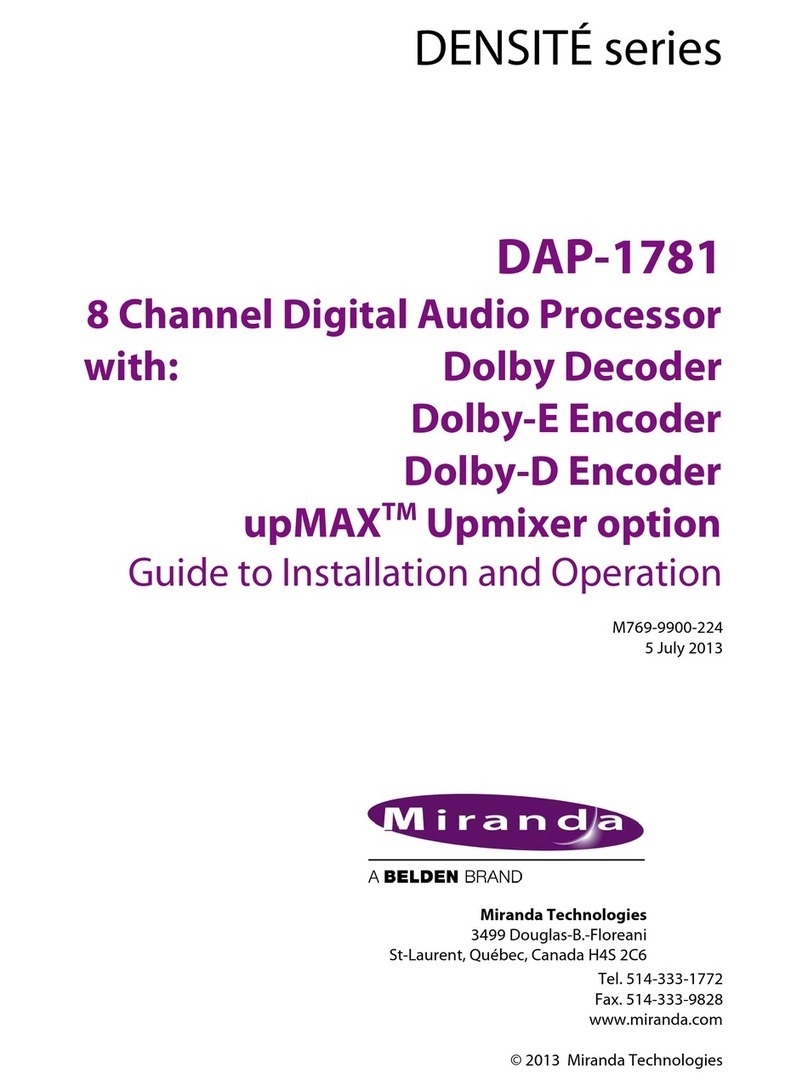
AEQ SONATA
Digital Broadcast Audio Processor
5
1.2.3.2. Analog left/right analog inputs and outputs.
Analog left and right inputs come through female XLR connectors at the device’s back panel.
Inputs are balanced and floating, with an impedance higher than 10k. They can admit up to
24dBu level (0dBu=0.775 Vrms).
Analog left and right outputs have XLR male connectors at the back of the unit. They are
balanced, floating, and have a 50source impedance. They can drive load loads of 600and
above, balanced or unbalanced. Max output level is adjustable between +12 dBu and -12 dBu.
Input and output levels are controlled through the PC software application.
1.2.3.3. Base-band composite MPX outputs.
The stereo encoder has two base-band analog and unbalanced outputs on two BNC connectors
at the back panel. Source impedance for each one is 75and the y can drive up to 8 V (peak to
peak) on a 75load in parallel with up to 0.047µF capacitance (equivalent to 30m of RG-59
cable) before noticeable degradation is produced to the audio performance.
The output level can be independently controlled by means of the PC control software under the
TX OUT screen.
1.2.4. PC interface.
There are two USB ports and an Ethernet 100Mbps port for PCs at the back panel of the unit.
These connection ports are required for remote control and transmission of the audio events,
and also to update system’s firmware.
SONATA Audio processor is supplied with a CD containing the control software, to be run on
any PC with Windows XP operating system or later. It requires 800x600 or higher resolution
graphics. USB connection is used for direct communications with the PC running the control
software, while the Ethernet port can be used when we want to control several units with the
same PC, by connecting them to a TCP/IP network, or when the unit needs to be controlled
remotely through Internet.
1.2.5. Precise audio peak modulation.
SONATA audio processor can process signals to be broadcast in FM and applies pre-emphasis
using the standard 25, 50 or 75us curves. This signal, once processed and pre-emphasized,
passes through a strict peak control to avoid over-modulation of the transmitting system in the
station. This way, a high modulation index is achieved but without system overloading and
hence without exceeding the law defined limits. Besides strictly controlling the peaks, the
processor also applies the 15 KHz signal filters, but protecting the 19KHz pilot tone. This way
aliasing distortion is avoided and hence channel separation is not degraded.
In order to protect and preserve the strict control of the peaks, you must observe the following
basic rules concerning the system:
•Avoid the connection of any piece of equipment at the output of the processor and stereo
generator such as equalizers, pre-emphasis and/or de-emphasis networks, line
transformers or filters. These elements usually produce changes in the frequency response
and phase of the signal, ruining the efficient control of the peaks.
•If a pre-emphasis or de-emphasis network exists in the system, it is desirable to disable it
and use the pre-emphasis function inside the audio processor, and configure the unit to
enable it.
•It is highly recommended that the internal stereo generator in the processor is used, as it is
designed to provide max efficiency in the control of the peaks and better channel
separation.
